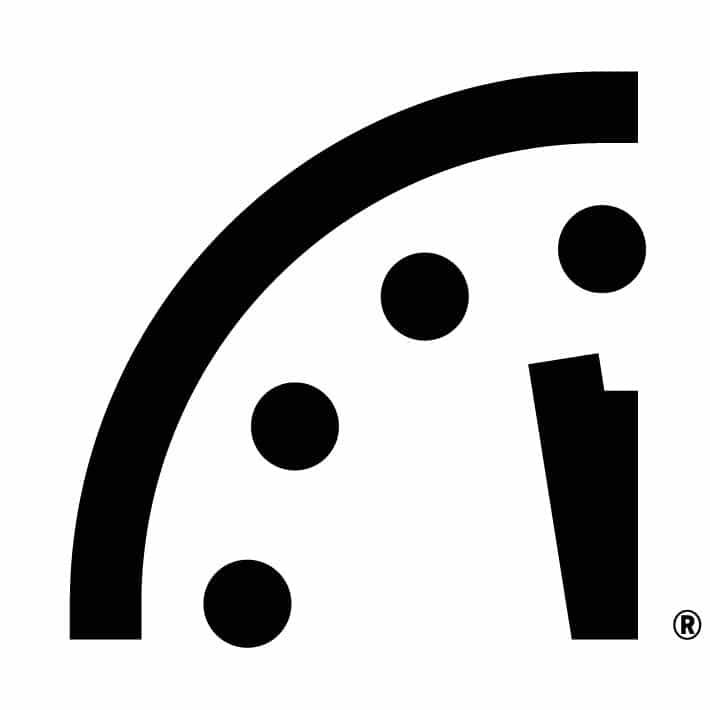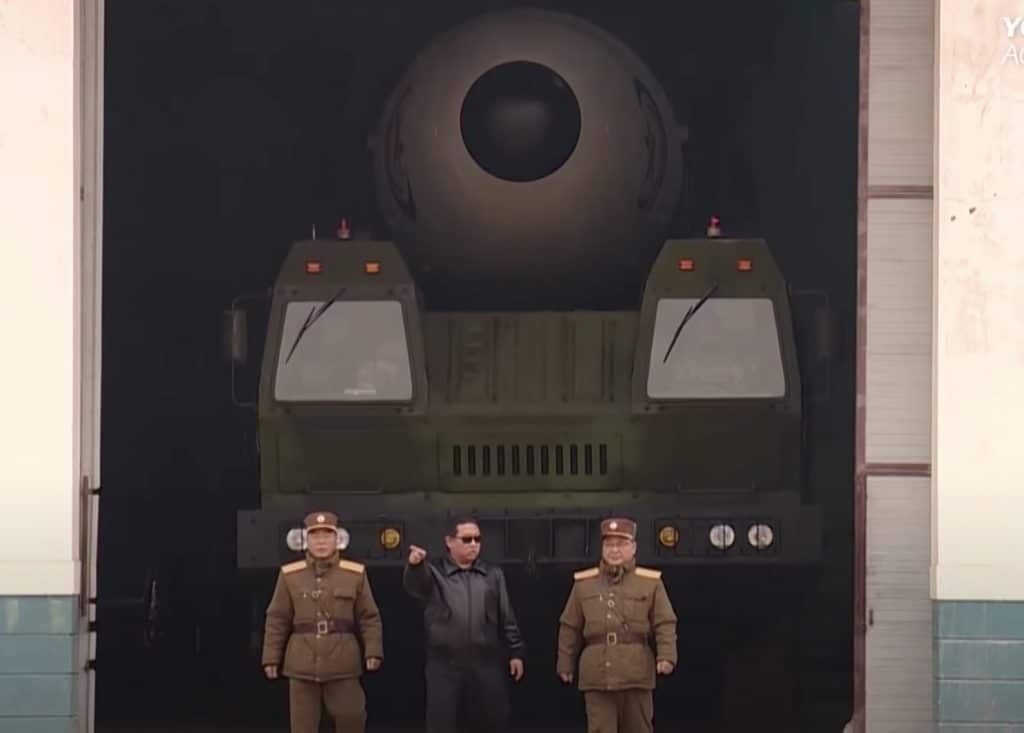A time of unprecedented danger:
It is 90 seconds to midnight
2023 Doomsday Clock Statement
Science and Security Board
Bulletin of the Atomic Scientists
Editor, John Mecklin
January 24, 2023

An exceedingly dangerous nuclear situation
Thinly veiled Russian threats to use nuclear weapons in the Ukraine war constitute the worst nuclear development in 2022. Warnings and cautionary statements have silenced such threats for now, but Russian officials should categorically renounce threats to use weapons of mass destruction in Ukraine.
Beyond the Ukraine conflict, previous trends of expansion and modernization of nuclear arsenals continue, with little progress to show in negotiations with either North Korea or Iran over their nuclear programs. US and Russian nuclear forces are still constrained by New START, but there is no certainty the treaty will be extended beyond 2026.
China’s considerable expansion of its nuclear capabilities is particularly troubling, given its consistent refusal to consider measures to enhance transparency and predictability. The US Defense Department claims Beijing may increase its arsenal fivefold by 2035 and could soon rival the nuclear capabilities of the United States and Russia, with unpredictable consequences for stability.
North Korea has greatly stepped up its intermediate- and longer-range missile testing. In late March, North Korea successfully launched an intercontinental ballistic missile for the first time since 2017. In the following months, it also launched numerous other ballistic missiles, most with short ranges. Perhaps most concerning, on October 4, North Korea launched an intermediate-range ballistic missile over Japan. Meanwhile, US officials contend that North Korea is preparing to conduct its seventh nuclear weapon test.

Iran continues to increase its uranium enrichment capacity, albeit under international safeguards outside the confines of the Joint Comprehensive Plan of Action that once restrained it. This positions Iran closer to a nuclear weapons capability, should it decide to cross that threshold. Returning to the nuclear deal would reduce risks and provide a path forward, and the United States, Europe, and other countries have made reasonable efforts to revive the deal. But instability in Iran and Tehran’s support for Russia's war against Ukraine will complicate successful negotiations to keep Iran from acquiring nuclear weapons.
India continues to modernize its nuclear arsenal of some 160 warheads, with new delivery systems now under development to complement or replace existing nuclear-capable aircraft, land-based delivery systems, and sea-based systems. Pakistan has an arsenal of similar size and continues to expand its warheads, delivery systems, and fissile material production.
The United States, Russia, and China are now pursuing full-fledged nuclear weapons modernization programs, setting the table for a dangerous new “third nuclear age” of competition. Long-standing concerns about arms racing in South Asia and missile arms races in Northeast Asia complete a dismal picture that needs to be addressed.
As a matter of priority, all five permanent members of the UN Security Council—including, especially, Russia—should make a renewed commitment to confront nuclear dangers through arms control efforts and strategic stability agreements. At the proper time, major multilateral nuclear diplomacy will be needed precisely because of a dire reality the Ukraine crisis underscores: The existential threat posed by nuclear weapons endures even as political circumstances change.
Learn more about how each of the Bulletin's areas of concern contributed to the setting of the Doomsday Clock this year:
About the Bulletin of the Atomic Scientists
At our core, the Bulletin of the Atomic Scientists is a media organization, publishing a free-access website and a bimonthly magazine. But we are much more. The Bulletin’s website, iconic Doomsday Clock, and regular events equip the public, policy makers, and scientists with the information needed to reduce manmade threats to our existence. The Bulletin focuses on three main areas: nuclear risk, climate change, and disruptive technologies, including developments in biotechnology. What connects these topics is a driving belief that because humans created them, we can control them. The Bulletin is an independent, nonprofit 501(c)(3) organization. We gather the most informed and influential voices tracking manmade threats and bring their innovative thinking to a global audience. We apply intellectual rigor to the conversation and do not shrink from alarming truths.
The Bulletin has many audiences: the general public, which will ultimately benefit or suffer from scientific breakthroughs; policy makers, whose duty is to harness those breakthroughs for good; and the scientists themselves, who produce those technological advances and thus bear a special responsibility. Our community is international, with half of our website visitors coming from outside the United States. It is also young. Half are under the age of 35.
Learn more at thebulletin.org/about-us.